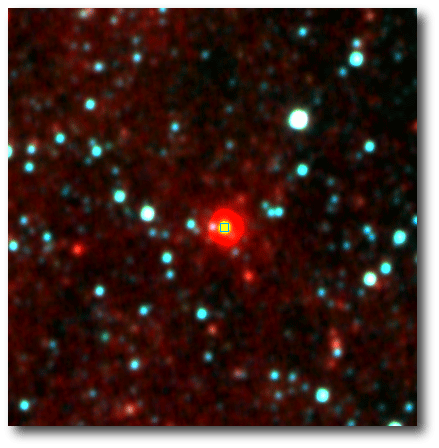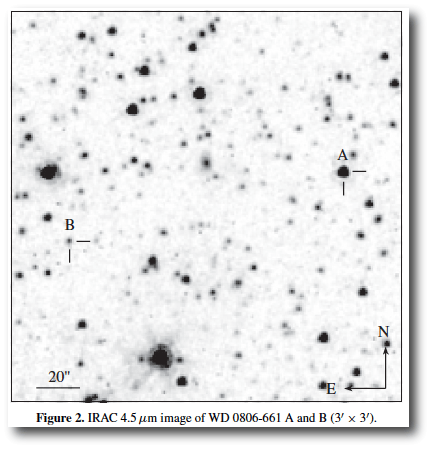We’re now a mere two weeks away from the HD 156846b transit opportunity. As I write, the planet is gathering speed as it plunges toward its steamy periastron encounter with its parent star (or more precisely, given the 49 parsec distance to HD 156846, back in the year 1851, the planet was plunging toward its steamy encounter with the parent star).
With a mass of at least ten Jupiter masses, HD 156846b is pushing the upper limit of the planetary regime. Like Jupiter and Neptune in our own solar system, but unlike all of the other well-characterized transiting extrasolar planets, its energy budget is likely dictated more by its residual heat of formation than by either tidal dissipation or the energy that it receives from its parent star as it circulates on its 360-day orbit.
Remarkably, objects that are very similar in mass and temperature to HD 156846b are starting to be discovered via direct imaging. In an ApJ letter from earlier this year, Luhman, Burgasser and Bochanski reported the discovery of a candidate brown dwarf which, if confirmed, has a positively shirtsleeves ~300K effective temperature and a mass of ~7 Jupiter masses.
This candidate, WD 0806-661 B, is in a ~2500 AU-wide orbit about a nearby white dwarf star that lies 19.2 parsecs away. It can be seen in Spitzer’s 4.5-micron band at two distinct epochs, and was flagged as a result of its common proper motion with its white dwarf primary. As it’s been detected so far only at 4.5 microns, its spectrum is largely unknown. It has a good chance, however, of signing on the dotted line as a first representative of the Y spectral class.
Which underscores the importance that HD 156846b will have it it turns out to transit. At V=6.5, the parent star is very bright, over 2.5 times brighter than either HD 189733 or HD 209458. The transmission spectrum for HD 156846, especially on the cold limb, would thus give an important and detailed clue toward what one might expect from the spectra of field Y dwarfs. And given that one of these guys could be lurking just a light year or two or three away, and given that the WISE preliminary release is on line and available, that’d be a very interesting clue indeed…



Question is what kind of temperatures would be expected for HD 156846b during the transit? Judging by the orbital diagram it looks like it should be substantially warmer than a Y dwarf (assuming there is a distinct spectral type below the T dwarfs). Also, what’s your take on WD 0806-661B in terms of formation mechanism, planetary status?
The orbit averaged effective temperature for HD 156846b should be just under 400K as a consequence of insolation alone. If it were in isolation, it’d probably be ~300K, depending on the age of the parent star. So its dawn terminator will potentially not be that different in atmospheric properties than WD 0806-661B.
Regarding the formation of WD 0806-661B? I would imagine that it formed via disk instability and was subsequently lofted out to a distant orbit, but that’s mere conjecture. If it gets detected in additional bands, then there will be a better characterization of its properties and spectrum.
So, this isn’t really related to the article, but I used this site a few years ago… downloaded systemic, uploaded some of the results for various stars, discussed on the forums… but I can’t seem to find any of that stuff now.
All I can find is a link to download systemic, but where is the “backend” that everything is uploaded on? I was specifically looking for the one I uploaded to HD 86081, but I can’t find the backend or the forums any more. Can anyone provide a link to these?